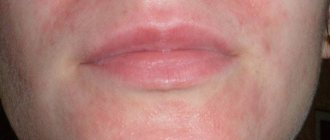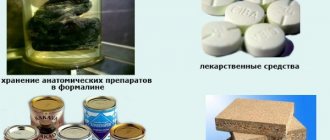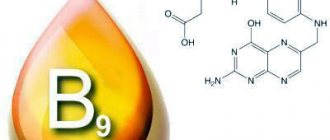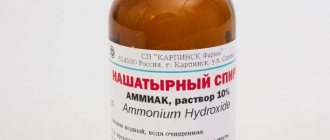For the body to function smoothly, hundreds of different nutrients are needed, and if even one of them is lacking, diseases can develop. Such compounds include glutamic acid: when it is deficient, metabolism and brain function are disrupted, and the condition of the skin and hair worsens. Let's take a closer look at the chemical formula, beneficial properties and options for using glutamic acid in medicine and cosmetology.
Solgar, Prenatal Nutrients, Multivitamin & Multimineral, 240 Tablets
1 588 ₽
Buy at a discount
Pharmacodynamics and pharmacokinetics
Pharmacodynamics
The Pharmacopoeia indicates that this drug improves the metabolism of cells of the nervous system. The structural formula of glutamic acid is C5H9NO4. A non-essential amino acid, present in the body only in the levorotatory form ( L glutamic acid a ). Acts as a mediator with pronounced metabolic activity in brain tissue, activates redox reactions in the brain, as well as protein metabolism. Regulates metabolism, transforming the functional status of the endocrine and nervous systems. Stimulates the transfer of excitation in neuronal synapses, promotes the neutralization and evacuation of ammonia , and increases resistance to hypoxia.
An important component of myofibrils , a component of the synthesis of other amino acids, ATP, acetylcholine, urea , helps transport and maintain the required content of potassium in brain tissue, serves as an intermediary between the metabolism of nucleic acids and carbohydrates, and normalizes the level of glycolysis in tissues. Has a hepatoprotective effect, suppresses the secretory function of stomach cells.
Pharmacokinetics
Has a high degree of absorption. It overcomes histohematic barriers, membranes of subcellular structures and cell membranes well. Accumulates in the liver, kidneys and soft tissues. Excreted in urine (5-7%) in its original form.
special instructions
For patients whose medication is accompanied by dyspeptic disorders, the tablets should be taken with food or immediately after meals.
During therapy with this drug, it is recommended to regularly do general clinical urine and blood tests.
To prevent or eliminate the neurotoxic effects associated with the use of drugs from the group of g-pyridinecarboxylic acid hydrazides (GICA drugs), Glutamic acid can be used in combination with pyridoxine (vitamin B6) and thiamine (vitamin B1)
For myopathy and muscular dystrophy, it is advisable to prescribe the drug in combination with pachycarpine or aminoacetic acid (glycine).
Glutamic acid tablets contain sugar, which should be kept in mind when prescribing them to patients with diabetes.
Considering the possible effect of the drug on the nervous system, it should be taken with caution when driving a car and performing potentially dangerous types of work.
Indications for use
Indications for the use of Glutamic acid (in complex therapy):
- inhibition of mental development of various etiologies, cerebral palsy , consequences after birth intracranial trauma, poliomyelitis , Down's disease ;
- schizophrenia, epilepsy (minor seizures), psychosis , depressive reactive state, insomnia , mental exhaustion , consequences of encephalitis and meningitis , progressive myopathy , depression ;
- neuropathy of toxic origin due to the use of isonicotinic acid derivatives.
Side effects
The most likely side effects that may occur with the use of Glutamic acid are:
- Allergic reactions (itching and hyperemia of the skin);
- Nausea;
- Vomit;
- Abdominal pain;
- Loose stools;
- Increased excitability of the central nervous system.
In addition, doctors warn that long-term use of the drug can cause a decrease in hemoglobin concentration, leukopenia, cracks on the lips and irritation of the mucous membranes of the oral cavity.
If any undesirable side effects develop during treatment with Glutamic acid, it is recommended to stop the course and consult a doctor.
Glutamic acid, instructions for use (Method and dosage)
The medicine is taken orally half an hour before meals; if symptoms of dyspepsia it is used after or during meals.
Adult patients are prescribed 1 gram of the drug up to three times a day.
- Children under 1 year of age are prescribed 100 mg per day.
- Up to 2 years of age, 150 mg per day is prescribed.
- Children 3-4 years old are prescribed 250 mg per day.
- Children 5-6 years old are prescribed 400 mg per day.
- Children 7-9 years old are prescribed 500-1000 mg per day.
- Children over 10 years of age are prescribed 1000 mg up to three times a day.
For oligophrenia, the drug is prescribed at the rate of 100-200 mg per kilogram of weight.
The duration of treatment is usually from 1-2 months to 1 year.
Contraindications
The use of Glutamic acid is contraindicated in:
- Hypersensitivity to the drug;
- Functional failure of the kidneys and/or liver;
- Conditions that are accompanied by fever;
- Functional inferiority of the bone marrow (with suppressed hematopoiesis);
- Increased excitability;
- Anemia;
- Characterized by rapid mental reactions;
- Stomach/duodenal ulcer;
- Obesity;
- Nephrosis (nephrotic syndrome);
- Leukopenia;
- Pregnancy and lactation.
Restrictions on the use of the product, according to the instructions, are kidney and/or liver diseases.
Regarding the use of Glutamic acid in pediatrics, due to the tablet form, the drug is not prescribed to children under 3 years of age.
Analogs
Level 4 ATX code matches:
Bravinton
Acefen
Carnicetine
Pyracesin
Nooclerin
Semax
Piracetam
Olatropil
Fezam
Vinpocetine
Cerebrocurin
Cavinton Forte
Calcium Hopanthenate
Cephabol
Olanzapine
Cerebrolysate
Pramistar
Sidnocarb
Vinpotropil
Glycine Ozone
Antifront, Armadin, Glycine, Instenon, Intellan, Cortexin, Neurotropin, Rilutek, Cytoflavin.
Deficiency Symptoms
Nutrient deficiencies are often observed in vegetarians and people who follow strict low-protein diets. Deficiency also occurs with a sudden onset of physical activity, kidney disease with nephrotic syndrome, and severe gastrointestinal diseases.
With a lack of glutamic acid, a number of physiological functions are disrupted. Deficiency is manifested by the following symptoms:
- decreased memory and attention;
- depressive states;
- anemia;
- dryness and sagging skin;
- the appearance of gray hair;
- in children - delayed psychomotor development.
To eliminate pathological signs, you should normalize your diet and add more protein foods to your diet. When the acid level is very low, it is replenished with the help of dietary supplements (dietary supplements).
Reviews about Glutamic acid
Reviews of Glutamic acid show that the drug is used only in combination with more potent drugs and is more similar in action to dietary supplements. The evidence base for the benefits of the drug for this or that pathology is weak. Glutamic acid is used separately in sports and bodybuilding.
Glutamic acid in bodybuilding and sports
The drug is often included in the diet of athletes to increase performance. It helps to recover faster after intense physical exertion, as it reduces intoxication metabolic products and has a weak anabolic effect.
Release form and composition
The dosage form of the drug is enteric-coated tablets.
Each tablet contains:
- 250 mg L-glutamic acid as active substance;
- Auxiliary components: povidone, calcium stearate, stearic acid, potato starch;
- Shell: sugar, light magnesium carbonate, povidone, colloidal silicon dioxide, talc, titanium dioxide, yellow wax, light mineral oil, patented blue V dye (E131).
Glutamic acid tablets are sold in 10 pcs. in blister packs.
Glutamic acid price, where to buy
Buying 10 tablets of the drug in Russia will cost approximately 28 rubles.
The price of Glutamic acid in a pharmacy in Ukraine (the same release form) is 5-6 hryvnia.
- Online pharmacies in RussiaRussia
- Online pharmacies in UkraineUkraine
ZdravCity
- Glutamic acid tab.
p/o 250 mg No. 60JSC Marbiopharm 84 rub. order
show more
Pharmacy24
- Glutamic acid No. 10 tablets PAT "Kiev Vitamin Plant", Kiev, Ukraine
7 UAH. order
general information
Glutamic acid has several names - glutamate, glutamate, Glu, Glu. The substance belongs to amino acid molecules. In the human body, the compound is part of proteins and some low-molecular substances; a small percentage of it is in an unbound form.
History of discovery
The substance was first obtained by the German chemist K. G. Ritthausen. The compound was released in pure form when gluten was treated with concentrated acid solutions. The name of the substance arose from the combination of two Latin words: “gluten” (gluten) and “amine”.
Japanese chemist Kinune Ikeda isolated a formula from seaweed and found that it gives dishes a characteristic, pleasant taste. The scientist called glutamic acid “umami,” which translated means “appetizing.” Ikeda received a patent for the production of this compound, and in 1908 he began producing a seasoning - monosodium glutamate.
Signs of excess
Excessive amounts of the compound accumulate in the body due to abuse of protein foods, lack of physical activity, or overdose of glutamate supplements. Excess acid also occurs in women during pregnancy and breastfeeding. Excess glutamate, like its deficiency, is harmful to the body.
Overdose symptoms:
- decreased levels of hemoglobin and leukocytes;
- vomiting, diarrhea;
- increased excitability, insomnia;
- allergic reactions;
- liver and kidney damage.
Attention! If an overdose develops, doctors recommend using symptomatic therapy, which includes taking enterosorbents and detoxification solutions, gastric lavage, and a protein-restricted diet.
Sports nutrition
The low price of glutamine and its characteristic properties make it popular among athletes. Sports nutrition manufacturers have produced a variety of amino acid-based supplements. You can purchase them through the pharmacy chain or in special stores.
When taking dietary supplements, the performance of muscle tissue increases. In addition, the period of muscle recovery after heavy exercise is reduced. Typically, athletes do not consume the amino acid in “pure” form, but in combination with glycine or cystine.
This mixture normalizes the activity of the cardiovascular system and increases endurance, as muscles contract better. However, you should not expect drastic changes from using the drug; it is still not a steroid. Although a large percentage of reviews from athletes are positive, there is a significant improvement in well-being.
Sometimes the supplement is used by bodybuilding enthusiasts to gain the required weight. Proper use of the product helps not only to gain pounds, but also improve the quality of the skin. The amino acid indirectly affects the growth of muscle mass. This is due to improved metabolism and increased immunity. With the help of acid, nitrogen penetrates into the body, which accelerates cell growth.
Glutamic acid – what is it?
In all living beings, glutamine, respectively, and glutamic acid are found in proteins, low-molecular substances and in a free state. It is an organic compound that has two acid groups and is classified as a conditionally essential amino acid.
Glutamic acid, or more precisely, its synthetic analogue, is found in many foods and acts as a flavoring additive and has a “meaty” taste.
When reading the composition of any product, you can pay attention to the following additives:
- Neurotransmitter E620;
- E624;
- E622;
- E621;
- E625.
All of these are glutamates, that is, substances obtained from glutamine combined with magnesium, potassium, sodium, etc. If such “E” are present, then this is all synthetic glutamic acid. But even in its natural form, glutamine is present in foods in quantities sufficient for humans.
What foods contain glutamic acid?
According to doctors, it is very difficult to eliminate glutamine from the diet 100%, since it is contained in a sufficient amount of the foods we consume. They include:
- hard varieties of cheese;
- cow's milk;
- eggs;
- duck meat, young chicken;
- pork;
- beef;
- Fish and seafood;
- vegetables: carrots, beets, green peas, corn, onions, tomatoes, peppers;
- mushrooms;
- walnuts;
- soy sauce.
Foods high in glutamine
One way or another, glutamate is present in the diet of any person. The only difference is the amount of glutamic acid consumed. What does this give? The amount of amino acid consumed affects the nervous system, skin cell regeneration, as well as the energy produced by a person.
Glutamic acid is found in free or bound form in all the foods listed above. Sometimes, during the process of heat or other culinary processing, glutamate changes from bound to free form, which is why a change in taste occurs.
The largest amounts of glutamic acid are found in Kombu and Nori seaweeds.
It is no coincidence that the discovery of this amino acid occurred in Japan, where these products are abundant.
Glutamic acid as a drug
It is well known that glutamic acid is a substance that can be of not only natural but also synthetic origin. In other words, if there is a lack of glutamine, you can take special medications to make up for its deficiency in the body.
It is worth noting that the synthetic form is in no way inferior to naturally obtained glutamine, has the same effect on the body and is just as easily absorbed.
Most pharmacological companies represented on the Russian market produce glutamine-containing drugs. The amount of amino acid in different products varies.
Thus, we can distinguish:
- single-component preparations containing only glutamic acid;
- multicomponent drugs that contain other components.
The pharmacological effect of glutamic acid is nootropic. That is, drugs with a high content of artificial glutamine affect the brain, stimulating the functioning of certain of its functions.
Glutamic acid belongs to the following pharmacological groups:
- Detoxifying agents;
- Proteins, amino acids;
- Other neurotropic drugs.
Release form, composition, active substance
The most common form of release is coated tablets. The main active component is glutamic acid itself; other auxiliary substances may also be present, but their dosage is minimal.
They are needed so that this amino acid is absorbed quickly and completely in the body. Also, excipients help maintain the specific form in which glutamine is released.
There are other release options: powdered and in the form of granules to obtain a suspension. Each dosage form is developed by specialists so that the active substances begin their action in the body as quickly as possible.
Speaking about a one-component drug, we can highlight the main active ingredient - glutamic acid, and auxiliary components. They are often represented by potato starch, gelatin, talc and calcium.
Their variability is possible due to changes in the form of the drug, or at the discretion of the drug manufacturer.
Why does the body need glutamic acid?
Scientists have proven the fact that this amino acid is one of the 20 most important for the human body.
Glutamic acid - what is it, a necessity for the body
Glutamine has the following abilities:
- regulate acid-base balance;
- quickly deliver the necessary microelements;
- stimulate the growth of new skin cells;
- slow down skin aging processes;
- increase nitrogen levels in the body;
- build immunity;
- neutralize ammonia formed in the body;
- synthesize folic acid;
- help the body endure physical and psychological stress;
- establish metabolic processes;
- increase mental abilities.
This is how glutamic acid works. A properly balanced diet high in glutamine will be the main condition for tight and healthy skin. If a person eats “haphazardly,” then the balance is lost and destruction of cells and then tissue occurs.
And this applies not only to the skin. Nerve cells are destroyed, connections between other amino acids are lost, etc.
Glutamine amino acid, obtained from food or special medications, has a wide range of actions, but self-prescription of drugs is not recommended, only after consulting a specialist.
Don’t miss the most popular article in the section: Glutamic acid - what it is, why and how it is used in sports and bodybuilding.
Skin beauty
Polyglutamic acid was derived from L-glutamic acid by fermentation. The component was obtained by fermenting natto beans. The extracted element is considered a strong hydrant, capable of retaining water more effectively than other products offered on the cosmetics market.
The substance greatly increases the level of moisture in the skin layer thanks to its unique molecular formula. It is actively included in cosmetics: creams for sensitive skin, whitening and after-sun products, anti-aging preparations. Polyglutamic acid, like glutamine, stimulates collagen production, smoothing wrinkles.
As reviews show , the component performs the following functions:
- Increases natural moisture factor (NMF).
- Smoothes, whitens and improves skin texture.
- Reduces wrinkles, has a calming and anti-inflammatory effect.
- Absorbs and retains moisture in tissues.
In addition to the above, polyglutamic acid enhances the functions of hyaluronic acid and protects it from inhibition by hyaluronidase. Positive qualities allow the element to soothe, rejuvenate and heal the skin layer.
Glutamic acid in gynecology
It is a well-known fact: to give birth to healthy children, you need to pay close attention to the period of pregnancy planning. But it is not always possible for a woman to get pregnant quickly. Some diseases can be treated with the use of glutamic acid.
By stimulating blood circulation, glutamine promotes rapid recovery of the reproductive system after surgical interventions. Hormonal disorders are traditionally treated with hormonal therapy, but glutamine amino acid plays an important role here too.
If you have an irregular cycle or rare ovulation, this drug can also be prescribed, because with such diagnoses it is very difficult to get pregnant.
The treatment regimen is prescribed according to the woman’s cycle:
- In the first half, the doctor prescribes drinking vitamin E (prepares the endometrium for the attachment of a fertilized egg) and folic acid (prevention of abnormalities in the development of the embryo);
- In the second half of the cycle, the woman is also recommended to take vitamin E, but now in triple dosage, as well as glutamic acid, which speeds up metabolism and improves blood circulation.
Any disruption of the female reproductive system is treated exclusively by professionals, and many of them are supporters of taking glutamic acid even during pregnancy.
Don't miss the most popular article in the section: Body drying for girls. Training program, detailed nutrition menu for the month by day.











